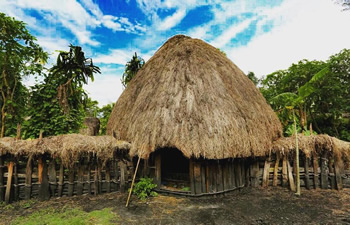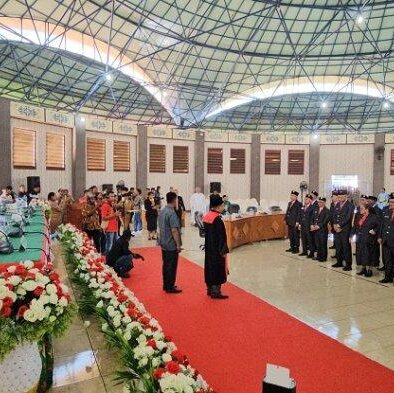Thelandofpapua.com – Nestled amidst the verdant landscapes of West Papua, Indonesia, the Honai house stands as a testament to the rich cultural heritage of the Dani people. This traditional dwelling, distinct in its structure and purpose, reflects the ingenuity and resilience of its inhabitants, who have crafted it to suit their environment and way of life.
A Glimpse into Honai’s Architecture
The Honai house, with its iconic mushroom-shaped design, is a modest yet functional structure. Built primarily from wood and topped with a conical roof made of straw or reeds, its architecture is purposefully compact. Standing at approximately 2.5 meters tall, the house features a single door and no windows. This design ensures the interior remains warm, a necessity for the cold mountain climate of Papua, and provides safety from predatory animals.
Inside, the Honai house is divided into two levels. The ground floor serves as a sleeping area, where male family members rest in a circular arrangement, while the upper floor is used for relaxation, dining, and crafting. In the center of the house, a bonfire offers warmth and serves as a communal gathering spot.
Cultural Significance and Usage
Interestingly, the Honai house is not a shared living space for an entire family. Instead, male and female members reside in separate structures. The house for men is referred to as “Honai,” while the women’s house is called “Ebei.” A third type, “Wamai,” is designated as a pigsty, showcasing the integration of livestock into their traditional lifestyle.
A typical Honai house accommodates 5 to 10 people, often forming part of a cluster that includes separate buildings for resting, dining, and livestock housing. This arrangement reflects the communal and practical aspects of Dani life, emphasizing the importance of shared spaces while maintaining functional separations.
The Broader Cultural Context
The Honai house is more than just a dwelling; it is a symbol of the Dani people’s harmonious relationship with nature. Constructed using readily available materials such as wood and straw, the design embodies sustainability and resourcefulness.
West Papua itself is home to over 300 indigenous tribes, each with unique languages and lifestyles. Despite these differences, the Honai house remains a unifying architectural form, showcasing the region’s shared cultural heritage.
Honai House and Indonesian Architecture
The Honai house is a remarkable example of Indonesia’s diverse architectural traditions. Beyond the Honai, the country’s architecture reflects a blend of influences from its rich history, including Islamic, colonial, and post-independence styles. Exploring these structures offers a deeper understanding of Indonesia’s cultural and historical tapestry.
Planning Your Visit
For those eager to experience the Honai house and the captivating culture of West Papua, it promises an unforgettable journey into the heart of Indonesia’s heritage. Visitors are encouraged to embrace sustainable travel practices, respect local customs, and follow health protocols to ensure a safe and enriching experience.
The Honai house is not just a home; it is a living monument to the Dani people’s enduring spirit, creativity, and connection to their land. Its timeless design continues to inspire and intrigue, offering a window into the remarkable traditions of West Papua.








